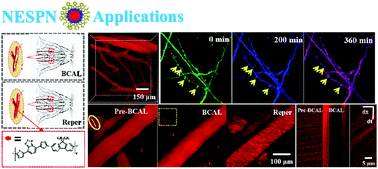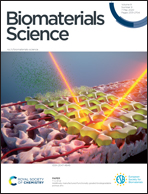NIR-emitting semiconducting polymer nanoparticles for in vivo two-photon vascular imaging†
Abstract
Two-photon fluorescence (TPF) imaging holds great promise for real-time monitoring of cerebral ischemia–reperfusion injury, which is important for the clinical diagnosis of stroke. However, biocompatible and photostable NIR-emitting probes for TPF imaging of ischemic stroke are lacking. Herein, we report the first NIR-emitting TPF probe (named NESPN) prepared using semiconducting polymers for TPF imaging of cerebral ischemia. By virtue of its excellent biocompatibility with the nervous system and bright fluorescence NIR emission, NESPN enables the real-time imaging of mouse brain vasculature with micrometer-scale spatial resolution, realizing clear visualization of ultrafine capillaries (∼3.16 μm). Moreover, NESPN can be utilized in the dynamic monitoring of cerebral blood flow velocity. Microangiography using NESPN was successfully used to indicate the openness of the penumbra area in the mouse brain stroke model. More importantly, this technique allows us to continuously monitor the whole process of ischemic stroke and subsequent reperfusion. This work provides a new and versatile tool for vascular research and diagnosis of vascular diseases.



 Please wait while we load your content...
Please wait while we load your content...